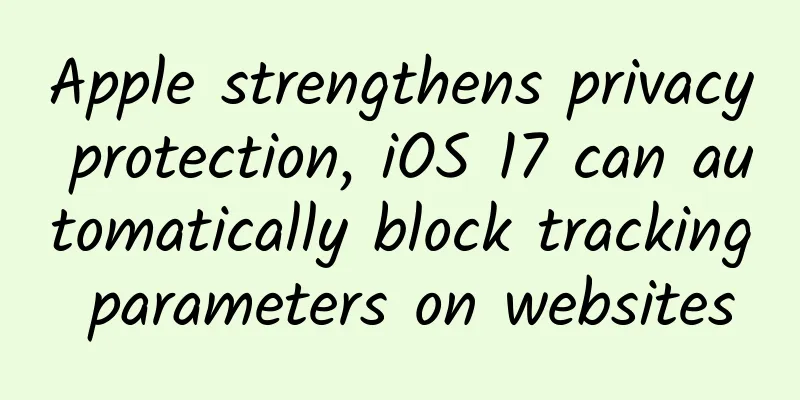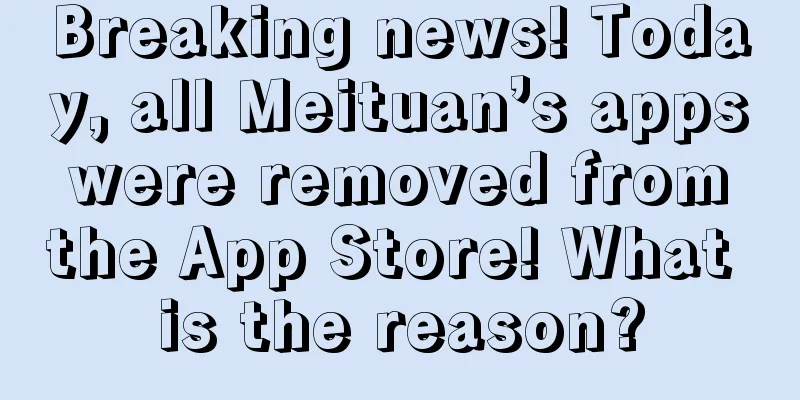Why do users uninstall apps?

|
This article is from a high-quality answer on Quora to the question "Why do users uninstall apps?", translated by Zeng Lixia, a graduate student at the School of Design, Jiangnan University question: What are the reasons why users might uninstall an app? These possible causes include:
Any other reasons to add? Answer by Srikrishnan Ganesan: If you want to know why users abandon/uninstall your app, the only way to find out the real reasons and key points behind the user behavior is to interview such users. Below I will divide the items into categories to help you understand. There are three key basic features of an app that users will consider before deciding to uninstall it:
If users think that any aspect of the experience is poor or terrible, then the APP is bound to be uninstalled by users. If usability is considered the most important and unique of the three basic characteristics (which is rarely the case), or if the experience you get from using the app is immersive (such as gamification), users will generally lower the importance of trust and performance. Users monitor these three parameters in various scenarios. Here is a long list of such scenarios, which users listed as reasons for abandoning the app (some cases only appear under certain environmental constraints such as low-end devices, slow network speed, etc.): Common causes (by category) Most of the reasons are pretty common, but some may be new insights for application developers. If you are a product manager or developer, it is best to take a minute to review the list below. Fixing some of these causes can also help your product get better ratings and reviews on the AppStore (see my related blog post: App Ratings – A Tool to Blackmail Users?) Usability and experience
performance
Trust
Category-based reasons Here are some relevant cases that can help you think about why users uninstall certain apps. To find more specific reasons, look at some key metrics of the app and talk to users! There are some things that metrics cannot show yet - please refer to my previous blog post for details. Productivity and business apps
Content apps (music, video)
Information and education apps
Shopping and travel apps (often ignored rather than uninstalled)
Social Apps
Game Apps
Local information APP
Personalization, Themes and Widgets Apps
Background: For an app with millions of downloads, I have interviewed thousands of its users, and the product has serious user churn problems in the early stages. This answer is based on interactions, online research, and summaries from many users, which comes from my frequent interviews with them about their app usage experience. |
<<: If these scenes cannot be connected, O2O will not have a perfect ending
>>: The report says that Android will account for 82.6% of the market share in 2019
Recommend
White Paper on Mobile Advertising Traffic Observation in the First Half of 2021
In the first half of 2021, many new opportunities...
iOS 12 first public beta released to see if it is worth upgrading
Apple has officially pushed the first public beta...
McKinsey report: What is the best way to earn money in the AI era? Programming, programming, programming
As artificial intelligence steps into your life s...
“Tik Tok Likers” earn over 10,000 yuan a month, is it reliable?
"Making money from those who want to make mo...
Architecture design: a design concept for remote call services (an application practice of zookeeper)
Before learning Zookeeper in depth, I would like ...
Collection: 68 information flow ads and SEM learning website resources are available for free!
01. CNZZ -UDplus Website: udplus.umeng.com Note: ...
Table tennis teaching course video collection
Course Catalog: ├──05-shakehandloop-attack.mp4 1....
Marketing promotion: The advertisement of “Tanwan Blue Moon” is very low-level, why would anyone still play it?
I believe everyone is very familiar with "Ta...
If you want to do a good job in conference marketing activities, you need to pay attention to these 3 key points?
As an important part of marketing , conference ma...
5 core steps to acquire app users
Many startups are interested in trying to discove...
The Chinese Dream of Foreign Brands
Editor’s Note: Nokia and Motorola are no longer j...
Anqing SEO Training: Do visitor preferences affect visit rate? How does SEO grasp visitor preferences?
A good website is undoubtedly the hard work of ma...
A former front-line operations staff member of Suning.com shared: What do you do as an operations staff member all day?
Operation , a high-sounding job title in the Inte...
Cool Android interactive animation and visual effects: High imitation of the Yinyuetai playback page
The new version of the Yin Yue Tai APP has a very...
Essential tools for new media operations, save it!
If you want to really master new media, you must ...









